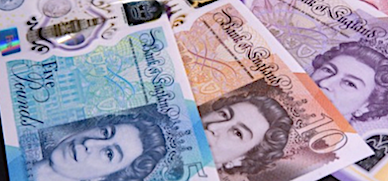UK government borrowing was £138.4 billion in the 11 months to February 2022, the third-highest financial year-to-February borrowing since monthly records began, according to the UK’s Office for National Statistics (ONS).
This was less than half of the £290.9 billion it borrowed in the same period of the last financial year during the pandemic.
The ONS said the UK’s public sector net debt excluding public sector banks (PSND ex) was £2.326 trillion at the end of February 2022 — around 94.7% of gross domestic product (GDP), maintaining a level not seen since the early 1960s.
Public sector net borrowing excluding public sector banks (PSNB ex) was £13.1 billion in February 2022, the second-highest February borrowing since monthly records began.
February’s borrowing was £2.4 billion less than in February 2021 but still £12.8 billion more than in February 2020, before the pandemic.
The interest payment on debt by UK central government in February 2022 was £8.2 billion, the highest February on record “with the RPI uplift on index-linked gilts being £5.2 billion over and above the accrued coupon payments and other components of debt interest.”
Interest payments on UK government debt year-to-date have soared 78.6% from £37.5 billion to £67 billion.
UK central government receipts in the financial year-to-February 2022 were £96.8 billion higher than in the same period last year — reaching £658.7 billion.
Central government day-to-day spending in the financial year-to-February 2022 was £39.2 billion lower than in the same period last year — but still very high at £857.9 billion.
Laith Khalaf, head of investment analysis at AJ Bell, wrote: “As we head towards the Spring Statement, higher than expected tax receipts will open up some fiscal space for the Chancellor to provide UK households with some help to manage the rising cost of living.
“Government borrowing so far this year is £25.9 billion below the last official OBR forecast, and half the level it stood at last year, at ‘only’ £138.4 billion.
“Inflation has helped propel tax receipts higher, on top of a recovery from the lockdown economy of the previous financial year.
“VAT receipts are £23.8 billion bigger this year, a result of higher prices in the shops, and revived consumer activity, combined with a rise in VAT for hospitality businesses.
“Fuel duty has brought in an extra £4.5 billion so far this year, which is no doubt why it might be targeted by the Chancellor as a way to alleviate pressure on household budgets.
“The government is clawing in more money from income tax and National Insurance too, and these receipts are set to be turbo-charged from April when income tax allowances are frozen and National Insurance rates rise.
“But inflation giveth, and inflation taketh away.
“So far this fiscal year interest payments on government debt have rocketed from £37.5 billion to £67 billion, partly as a result of higher coupons being paid on the £500 billion of inflation-linked gilts it has issued.
“That effectively means that around half the money the government is currently borrowing is being used to service its debt, which is a precarious position for any Chancellor.
“Higher debt interest payments are also likely to scale back the size of the windfall Rishi Sunak has to play with in the forthcoming Spring Statement.
“The OBR will be pushing up its forecasts for inflation and interest rates, which will also elevate the projected cost of servicing government debt, particularly seeing as £847 billion of gilts are pegged to base rate by the QE programme.
“The Chancellor is clearly under huge pressure to fork out to help out with the cost of living crisis, but record levels of borrowing, combined with rising interest rates, will probably temper his generosity.”
